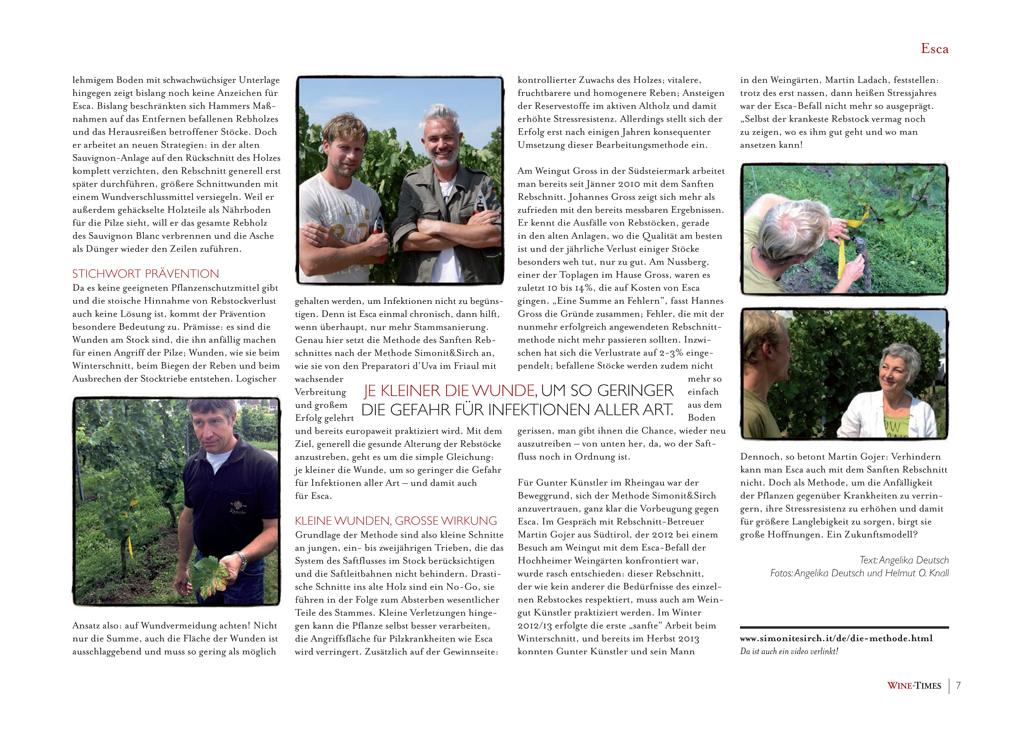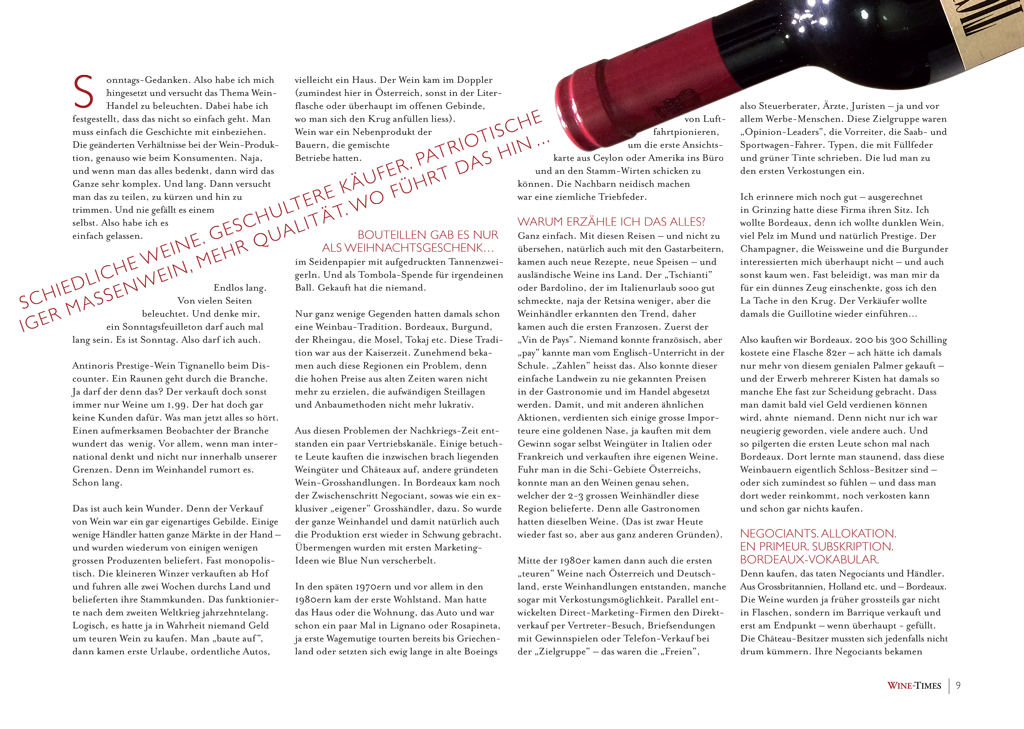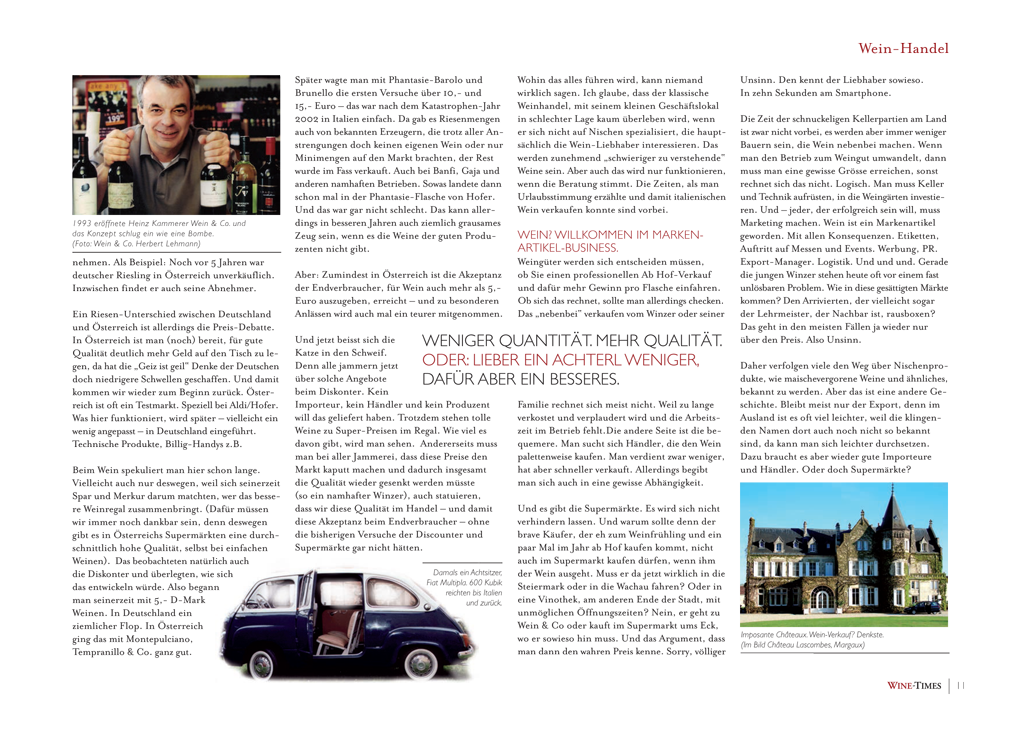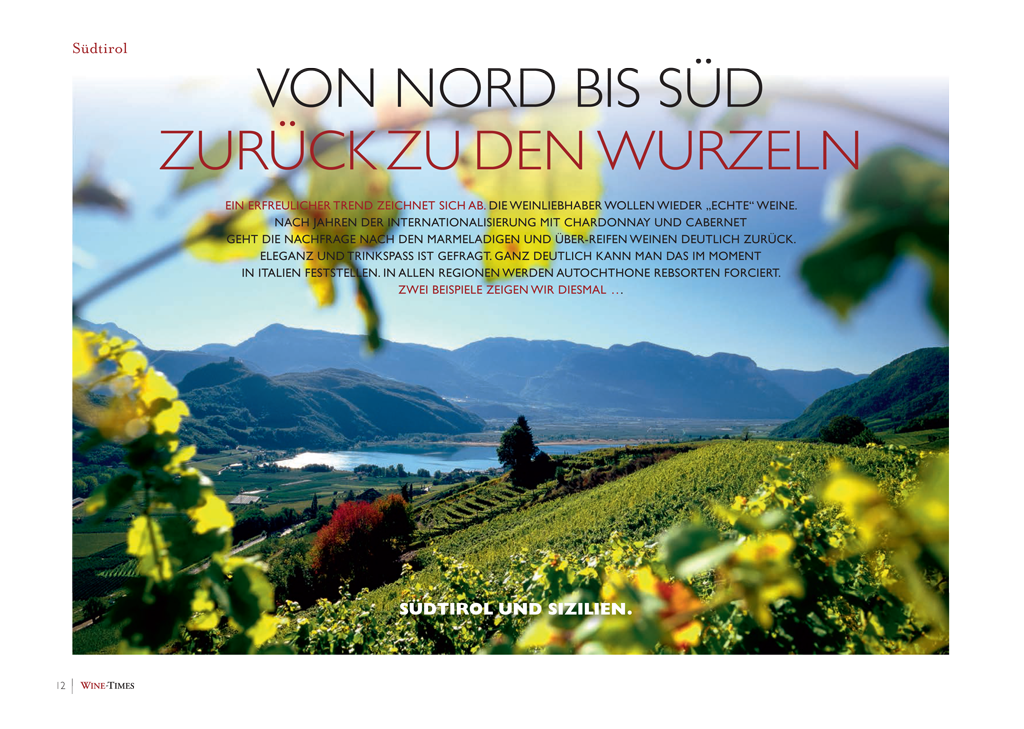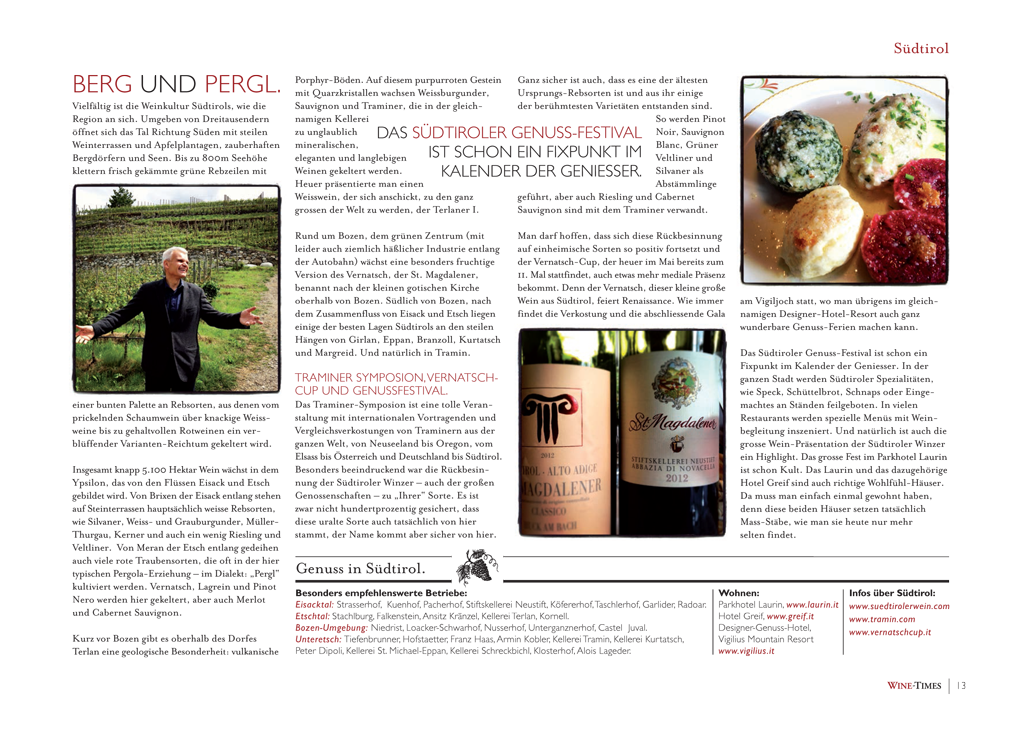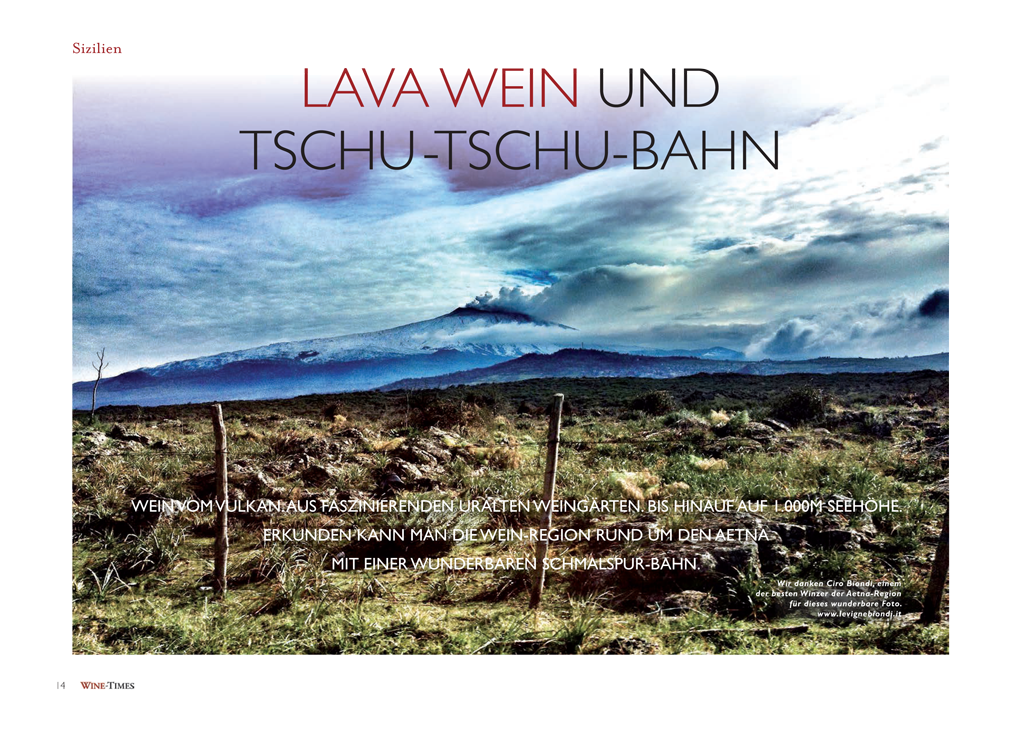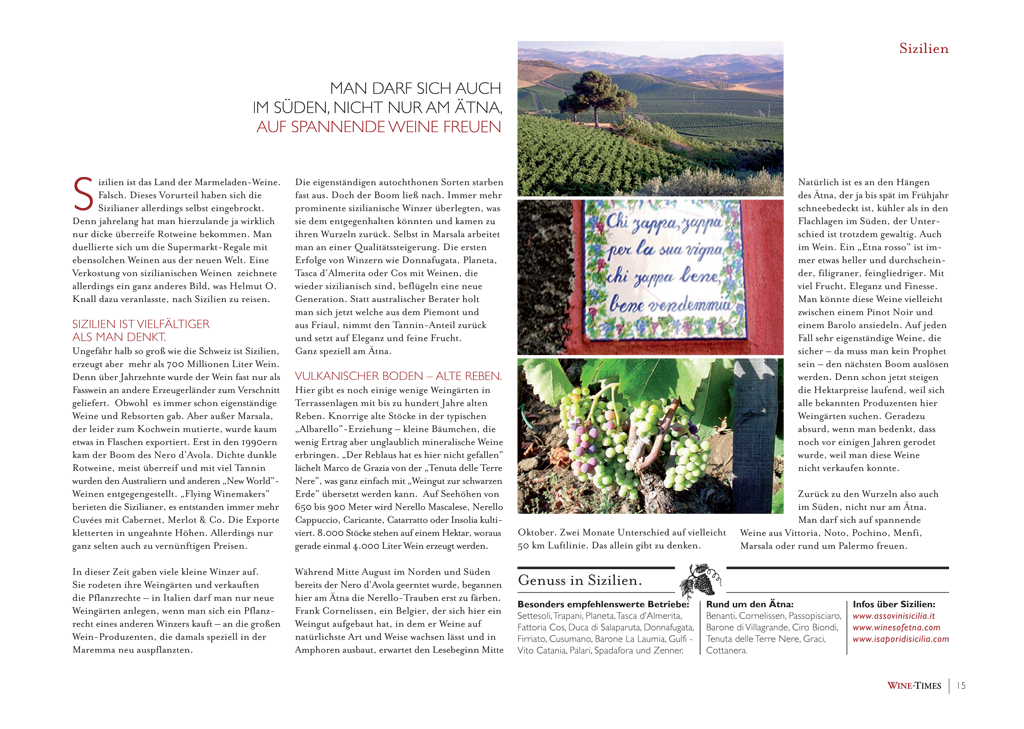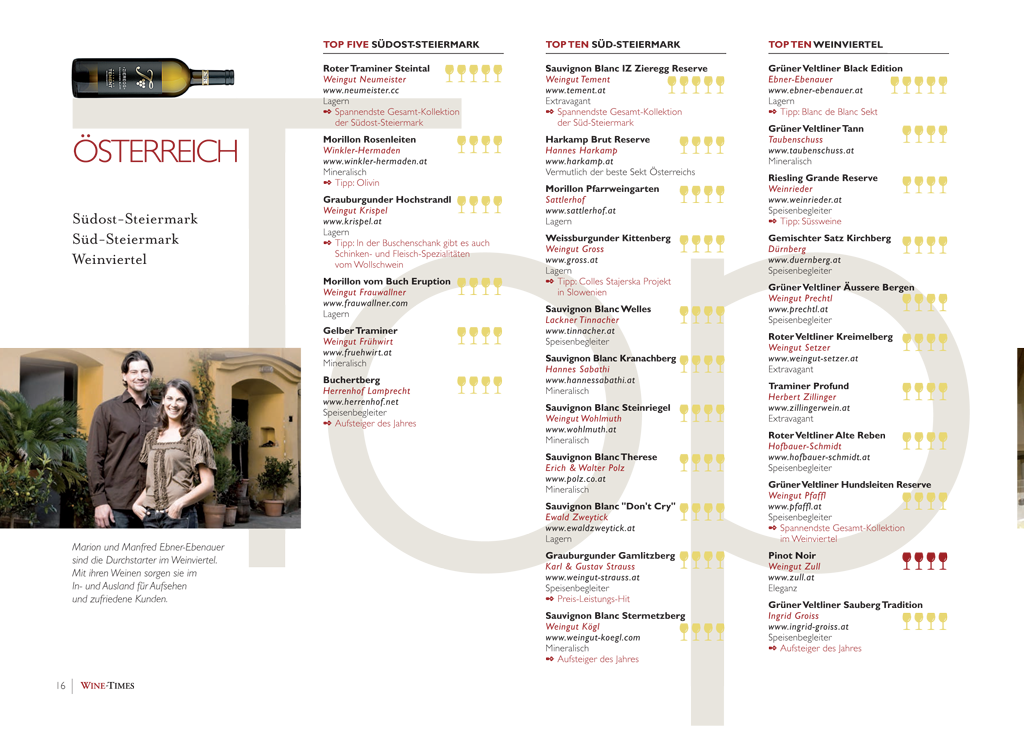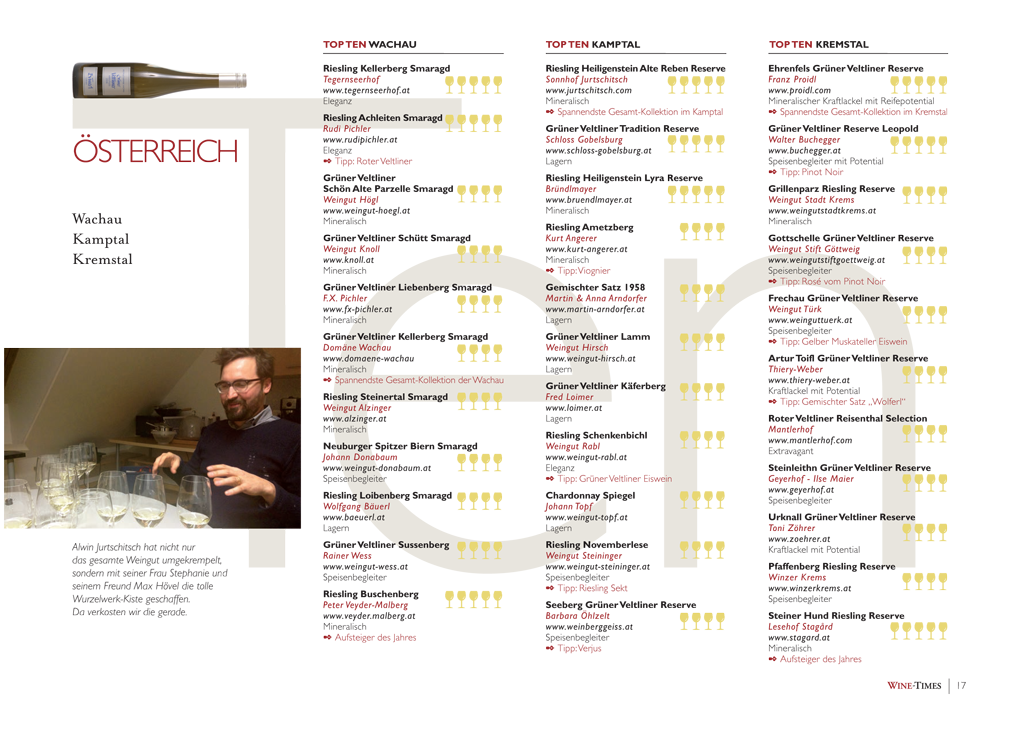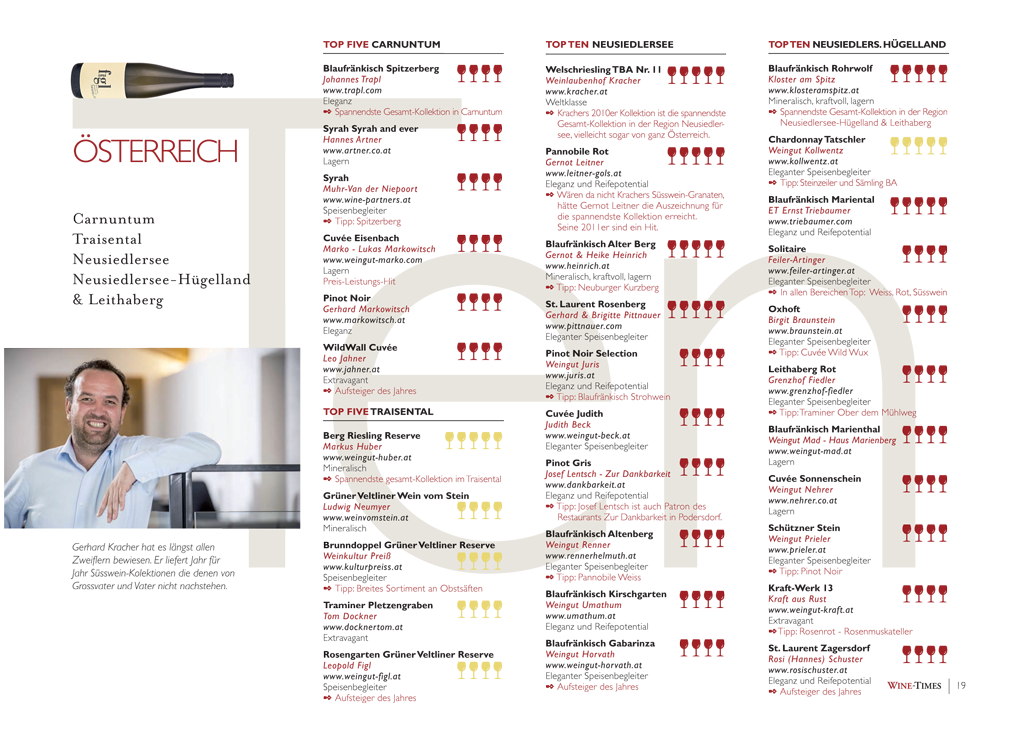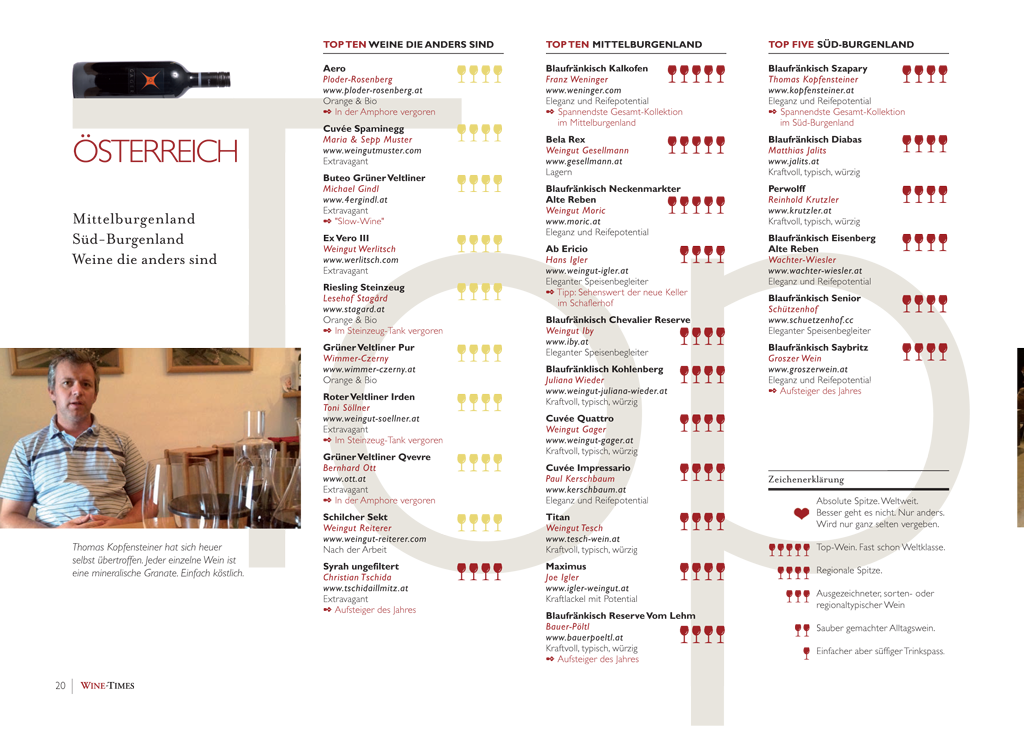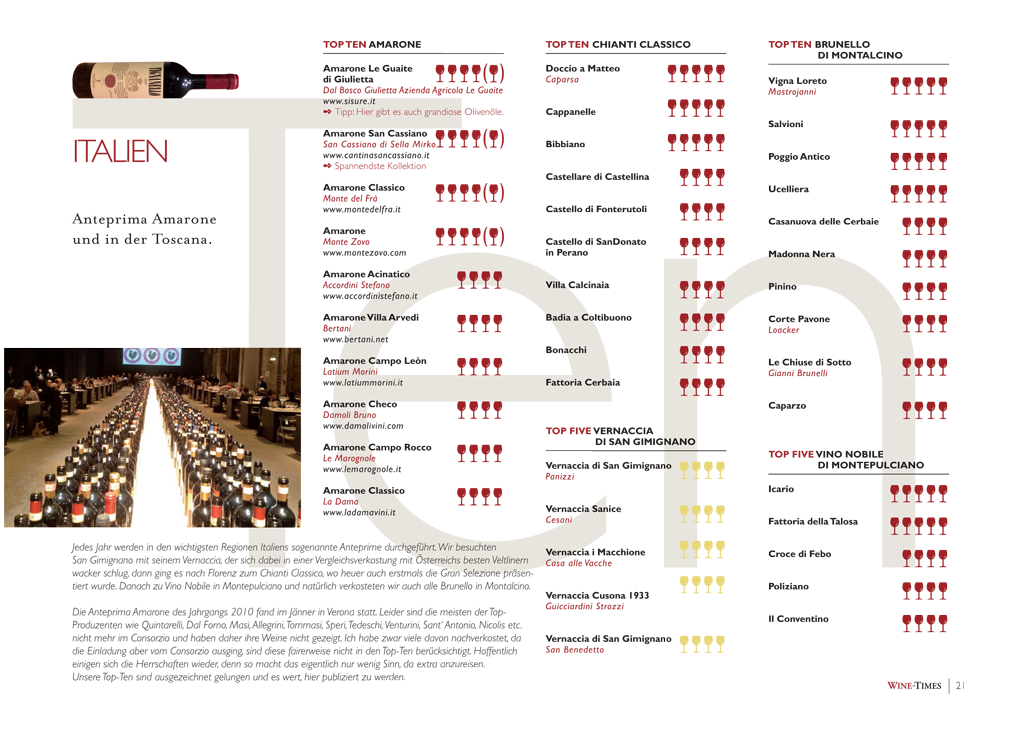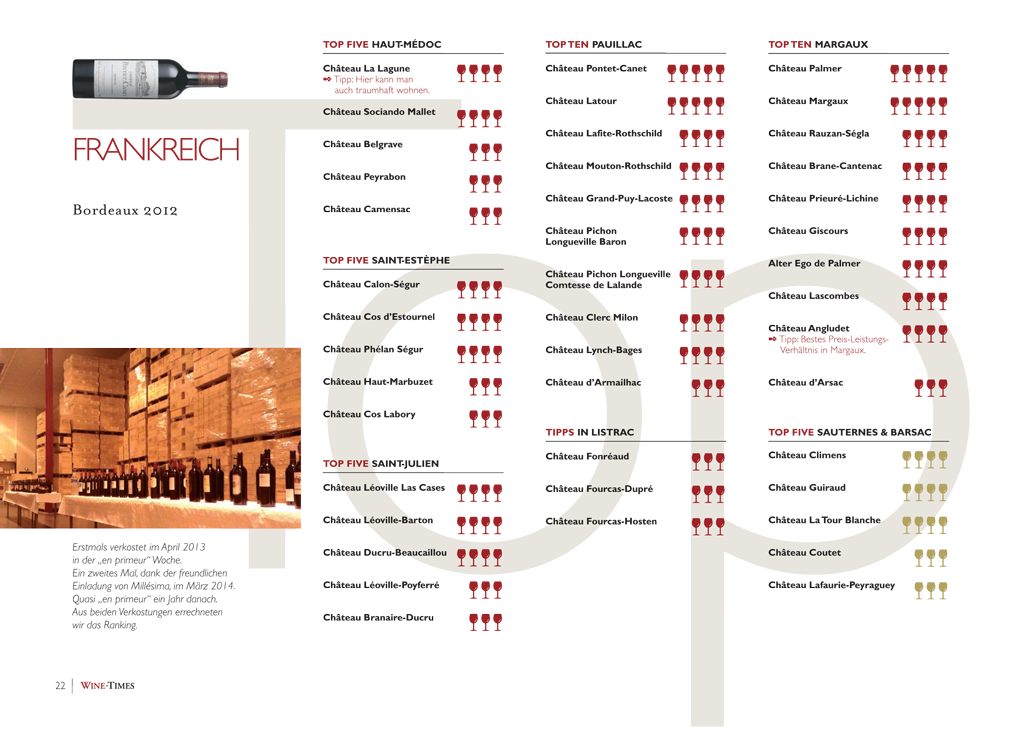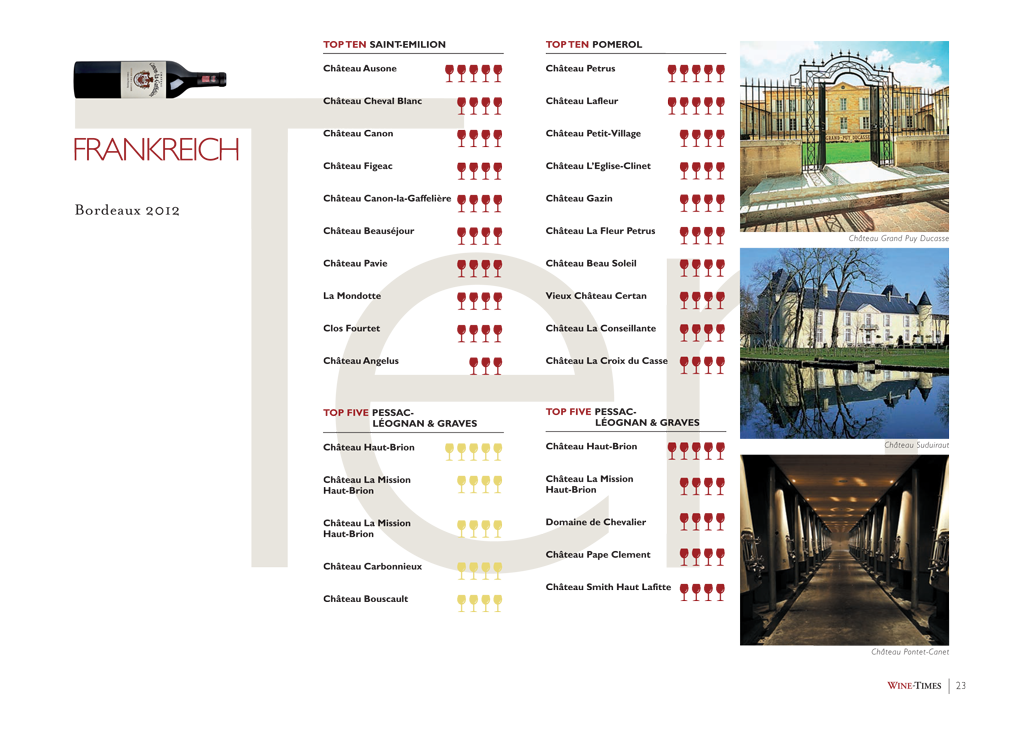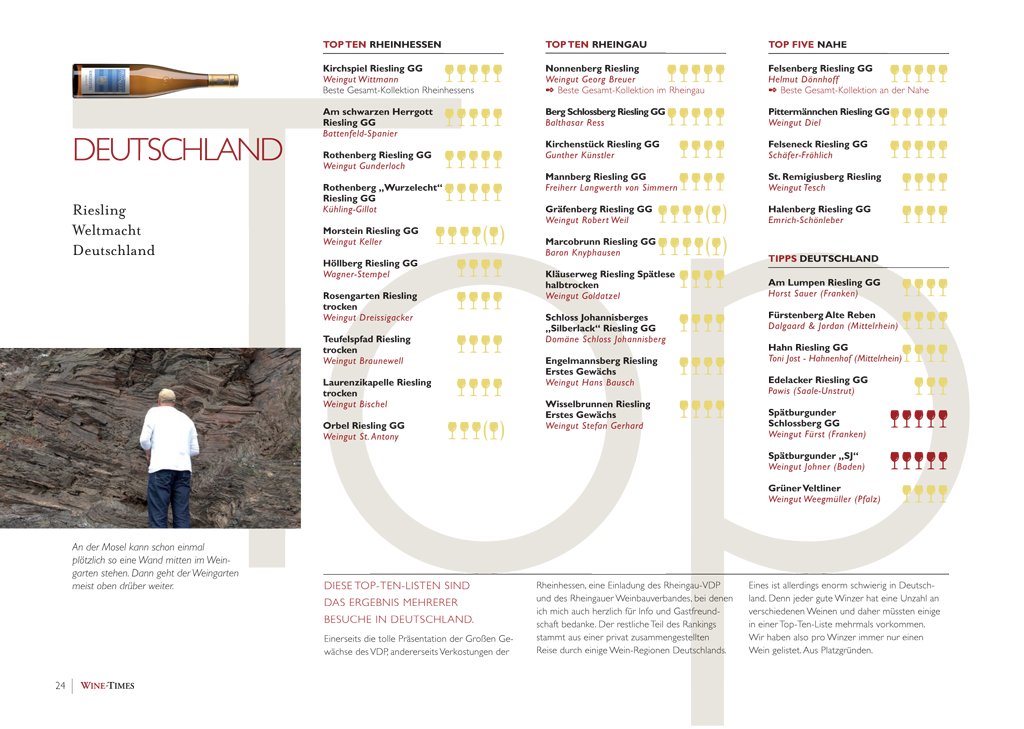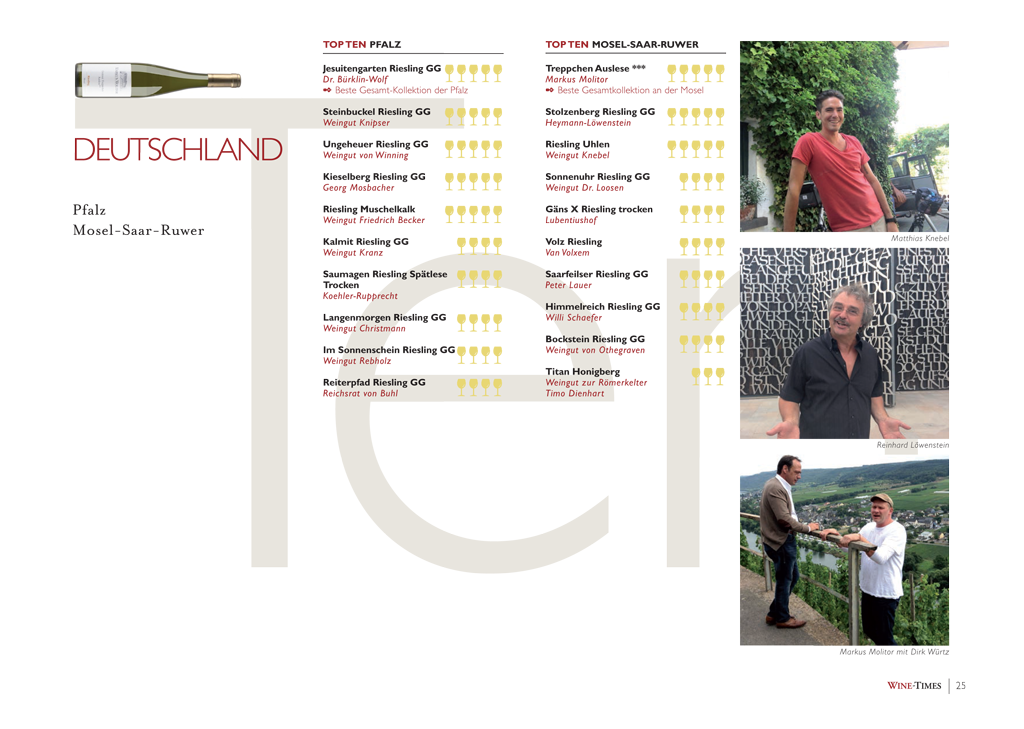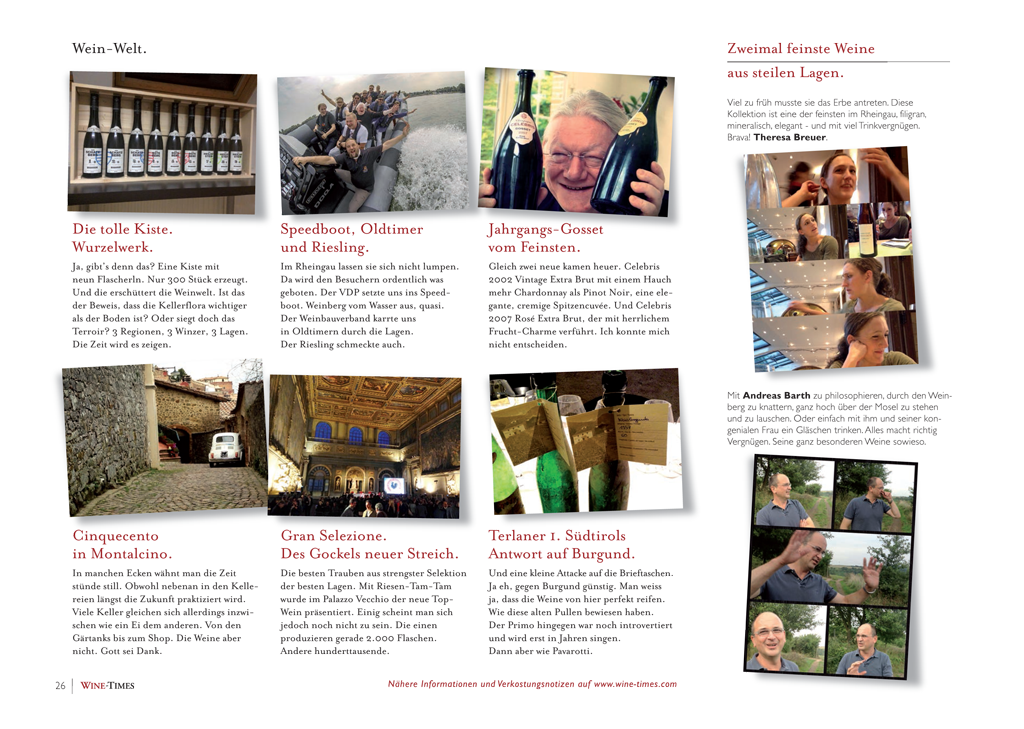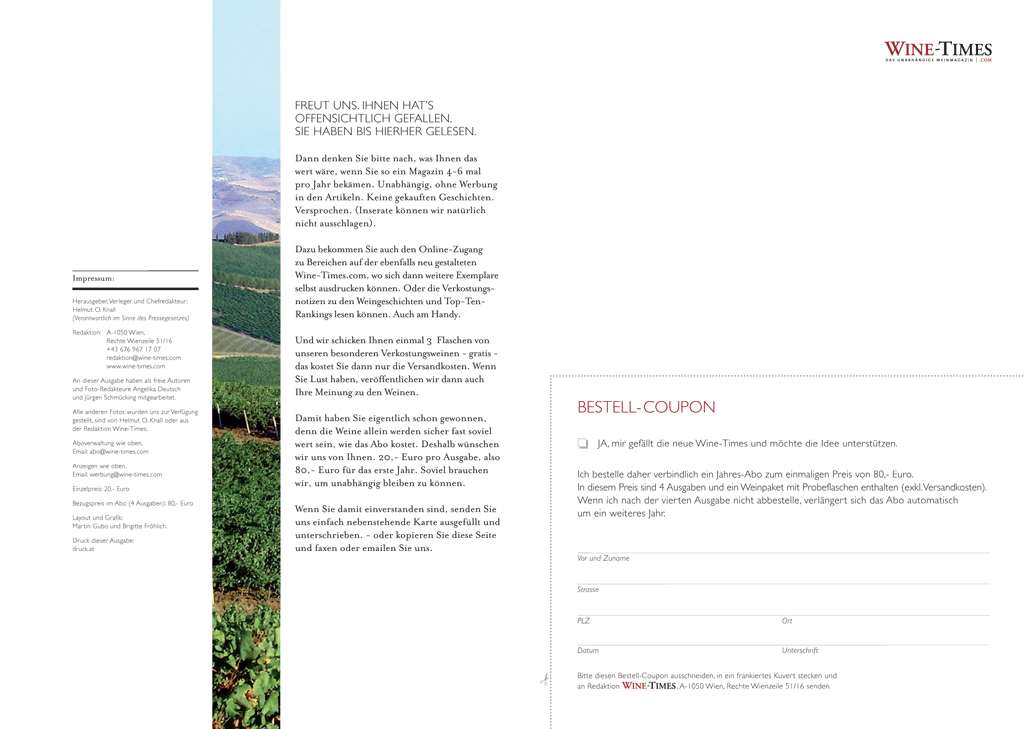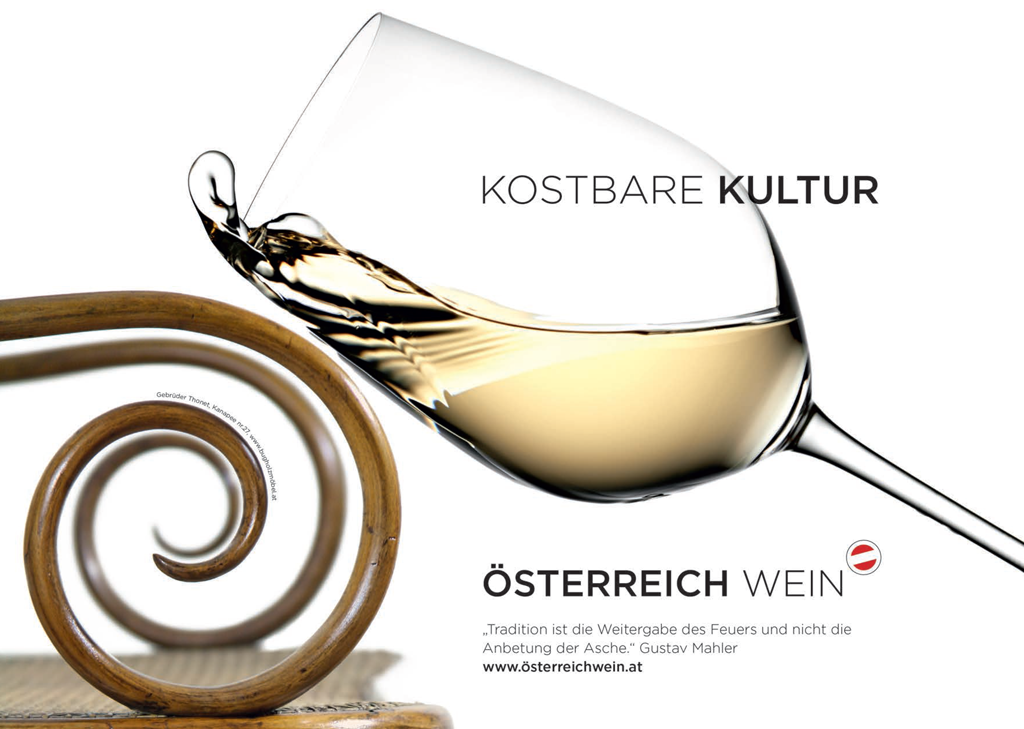Hier geht's zum aktuellen Wine-Guide-Austria in deutscher Sprache, dem ultimativen Nachschlagewerk zum österreichischen Wein.
The 2009 Vintage.
A report from John U. Salvi, MW.
Count John U. Salvi, Master of Wine, is living in Bordeaux for more than 35 years. As negociant, oenologist and wine-writer he knows Bordeaux-Vintages and - of course - the weather, better than most of other wine-writers. Read his report on the vintage 2009.

John U. Salvi, MW. (Photo: Joe Haider)
Most wine producers agree that there are four main factors that go to make up the wine year in and year out. Firstly there is soil, which does not change. Secondly there is the grape variety and its American rootstock, which also do not change short of replanting. Thirdly there is the weather and fourthly the guiding hand of man. These last two are variables and the wine each year is shaped and structured by the weather conditions and is a direct product of the meteorological conditions. Man must do the right things at the right time, but cannot change the weather.
Many people ignore the winter, feeling that it is not important when the vine is dormant. This is false and winter weather is important for two main reasons. Firstly the amount of rain and secondly the amount and extent of cold weather. The cold weather, particularly frosts, help the new wine to fall bright, but more importantly fill or do not fill the water table for the vine to have access to water throughout the summer, particularly if it is a hot, dry one. During winter 2008-9 we had some ferocious cold, including 8 consecutive days of frost and some subzero days. This was perfect and cleaned up all the bugs and beasties on the vine and in the soil. The vine went into its vegetative cycle in fine form. However rain was sparse. Total rainfall from November to March inclusive was 347.1mm, whereas the long term 1920-2008 average is 458.1mm (over 100mm more). We were therefore somewhat worried about water for the coming summer.
Many people ignore the winter, feeling that it is not important when the vine is dormant. This is false and winter weather is important for two main reasons. Firstly the amount of rain and secondly the amount and extent of cold weather. The cold weather, particularly frosts, help the new wine to fall bright, but more importantly fill or do not fill the water table for the vine to have access to water throughout the summer, particularly if it is a hot, dry one. During winter 2008-9 we had some ferocious cold, including 8 consecutive days of frost and some subzero days. This was perfect and cleaned up all the bugs and beasties on the vine and in the soil. The vine went into its vegetative cycle in fine form. However rain was sparse. Total rainfall from November to March inclusive was 347.1mm, whereas the long term 1920-2008 average is 458.1mm (over 100mm more). We were therefore somewhat worried about water for the coming summer.
Spring.

Vineyards in Spring, Graves.
March was a magnificent month, without a single frost, with only 31.0mm of rain (long term average 70.0mm) and with 220 hours 36 minutes of sunshine (average 180 hours). In spite of this bud-break was not early and only a few precocious Merlot vines budded at the end of it.
April was mild and wet. 115.8mm on 17 days was 45% above average. Sunshine also was 10% below average. However, the first 9 days, when most of he budding took place, were almost dry and the subsequent rain was welcome after the dry March. Spring-like temperatures meant a regular and gentle budding.
May was a fine month, albeit with several violent and destructive storms. Rainfall, at 78.4mm, was slightly below average, whilst sunshine was 14 hours above it. Spring-like temperatures encouraged abundant vegetative growth. The end of the month was sunny and hot and the first flowers appeared. The downside was the large number of hectares destroyed partially or totally by those brutal storms in strips of land in various appellations.
April was mild and wet. 115.8mm on 17 days was 45% above average. Sunshine also was 10% below average. However, the first 9 days, when most of he budding took place, were almost dry and the subsequent rain was welcome after the dry March. Spring-like temperatures meant a regular and gentle budding.
May was a fine month, albeit with several violent and destructive storms. Rainfall, at 78.4mm, was slightly below average, whilst sunshine was 14 hours above it. Spring-like temperatures encouraged abundant vegetative growth. The end of the month was sunny and hot and the first flowers appeared. The downside was the large number of hectares destroyed partially or totally by those brutal storms in strips of land in various appellations.
Summer.

Château Franc Mayne in August. (Photo: UGCB)
June was overall very hot and the second half of the month was dry whilst the first half was wet, rain falling from 5th – 10th. This rain, during the main flowering period, was highly unwelcome and the vine suffered both shatter and millerandage. Sunshine however was fabulous and not far off the June record, the last 10 days being the sunniest since 1946. This dried out the developing mildew caused by the earlier humidity and we want into July on time and in blazing heat.
July was hot and dry but not exceptionally so apart from the first few days. Rainfall was 15% below the average and sunshine hours well above it. The vine loved it. However, spraying against mildew caused by humidity was vital at the start but had dried out by the end, which was splendid because the very first “véraison” (colour change) started on the Merlot. We went into August still on time and looking good.
August was very dry. Only 23.6mm on 4 days, nearly all at the beginning of the month, which was when véraison was in full swing on all red grapes? Sunshine hours were over 30 hours more than average. There were also some very hot days. 15th hit 36.2°C. Many growers did not realise it, but the vine did suffer some hydric stress and even some stoppage. However it was not dramatic and grapes were superbly healthy and developing regularly and contentedly. The very first picking of Sauvignon started on 28th, but this is often to get media coverage rather than to make fine wine.
July was hot and dry but not exceptionally so apart from the first few days. Rainfall was 15% below the average and sunshine hours well above it. The vine loved it. However, spraying against mildew caused by humidity was vital at the start but had dried out by the end, which was splendid because the very first “véraison” (colour change) started on the Merlot. We went into August still on time and looking good.
August was very dry. Only 23.6mm on 4 days, nearly all at the beginning of the month, which was when véraison was in full swing on all red grapes? Sunshine hours were over 30 hours more than average. There were also some very hot days. 15th hit 36.2°C. Many growers did not realise it, but the vine did suffer some hydric stress and even some stoppage. However it was not dramatic and grapes were superbly healthy and developing regularly and contentedly. The very first picking of Sauvignon started on 28th, but this is often to get media coverage rather than to make fine wine.
Harvest.

Château Pape Clement. (Photo: UGCB)
September was a splendiferous month and we can already see why the wine will be fine. Sunshine hours were over 40 above the long term average. The first 10 days were fine and dry and this is when nearly all the grapes for dry white wine were vintaged. The last 10 days were the sunniest for 63 years. Temperatures were a touch above average and the rainfall was half the average, but fell just when it was most needed, 15th – 20th, to relieve any hydric stress and develop the Noble Rot for the sweet wines. The dry wines were picked by then. Almost a perfect month for the vines and growers were more happy and relaxed than I have seen them for a long time. Autumn came in on 22nd. The mid-month rain had time to turn from water to wine (about 5 days) and Merlot started to be picked about 21st - 25th. Things really looked splendid. Cabernet started to be picked from 28th, but most waited a few more days for perfect phenolic ripeness.
October was mild and dry. About as ideal for picking Cabernet and Petit Verdot as could be wished for. Rainfall was a tiny 33.8mm as opposed to the average of 94.0mm. Temperatures were gently above average. Grapes remained in perfect condition and were picked in perfect health with no threat from rot or mildew. Sunshine was a full 50 hours above average. Could anybody ask for more? 11th – 20th was almost bone dry and the finest grapes were harvested having been allowed to swell gently from the little rain that did fall. This was the proverbial Golden October. Château Cheval Blanc was on television mentioning the 1947!! Generally speaking vintaging finished by 22nd.
The result of all of the above is easy to see and shows why the grapes in 2009 were wonderfully healthy, which is relatively rare in the normally humid climate of Bordeaux. It allowed growers the luxury of picking in a leisurely fashion without the usual fear of rot. They could pick each grape variety at the perfect moment of ripeness. Most producers agree that 80% of the wine is made in the vineyards, and with today’s modern equipment if the grapes re perfect there is little excuse for not making fine wine. On the other hand NOBODY can make fine wine with imperfect grapes!! Thus this perfect health, together with ideal acidities, ideal sugar content in the must and perfect phenolic ripeness are the main reasons why 2009 is a fine vintage.
As things stand today I have tasted about 40 from different regions. It is not a year in which one region is significantly better than another and it is not a Cabernet or a Merlot year. It is a fine vintage across the board for fine wine-makers. The wines are beautifully balanced, compact and dense but without excess. The fruit is vibrant and like biting into a fresh grape. The acidities are fresh and vital and the tannins and the phenolics ripe and already integrating. As I said above, the cold winter spells helped the wines fall bright and they will be more ready than usual for the En Primeurs tastings at the beginning of April. Exciting things are in store for wine lovers.
October was mild and dry. About as ideal for picking Cabernet and Petit Verdot as could be wished for. Rainfall was a tiny 33.8mm as opposed to the average of 94.0mm. Temperatures were gently above average. Grapes remained in perfect condition and were picked in perfect health with no threat from rot or mildew. Sunshine was a full 50 hours above average. Could anybody ask for more? 11th – 20th was almost bone dry and the finest grapes were harvested having been allowed to swell gently from the little rain that did fall. This was the proverbial Golden October. Château Cheval Blanc was on television mentioning the 1947!! Generally speaking vintaging finished by 22nd.
The result of all of the above is easy to see and shows why the grapes in 2009 were wonderfully healthy, which is relatively rare in the normally humid climate of Bordeaux. It allowed growers the luxury of picking in a leisurely fashion without the usual fear of rot. They could pick each grape variety at the perfect moment of ripeness. Most producers agree that 80% of the wine is made in the vineyards, and with today’s modern equipment if the grapes re perfect there is little excuse for not making fine wine. On the other hand NOBODY can make fine wine with imperfect grapes!! Thus this perfect health, together with ideal acidities, ideal sugar content in the must and perfect phenolic ripeness are the main reasons why 2009 is a fine vintage.
As things stand today I have tasted about 40 from different regions. It is not a year in which one region is significantly better than another and it is not a Cabernet or a Merlot year. It is a fine vintage across the board for fine wine-makers. The wines are beautifully balanced, compact and dense but without excess. The fruit is vibrant and like biting into a fresh grape. The acidities are fresh and vital and the tannins and the phenolics ripe and already integrating. As I said above, the cold winter spells helped the wines fall bright and they will be more ready than usual for the En Primeurs tastings at the beginning of April. Exciting things are in store for wine lovers.
Sweet.

(Photo: Joe Haider)
A very brief word about the sweet wines. The botrytis cinerea was late in developing and growers were becoming worried as it was so dry. Then came that much needed September rain and the Noble Rot developed rapidly, evenly and copiously. Highly botrytised grapes were picked in beautiful condition, although crops were small. These wines will be magnificent in the hands of competent winemakers and rich with the toasty bouquet and flavour of botrytis.
© by Weinspitz_Helmut_Knall
last modified: 2010-03-28 11:39:23
last modified: 2010-03-28 11:39:23







